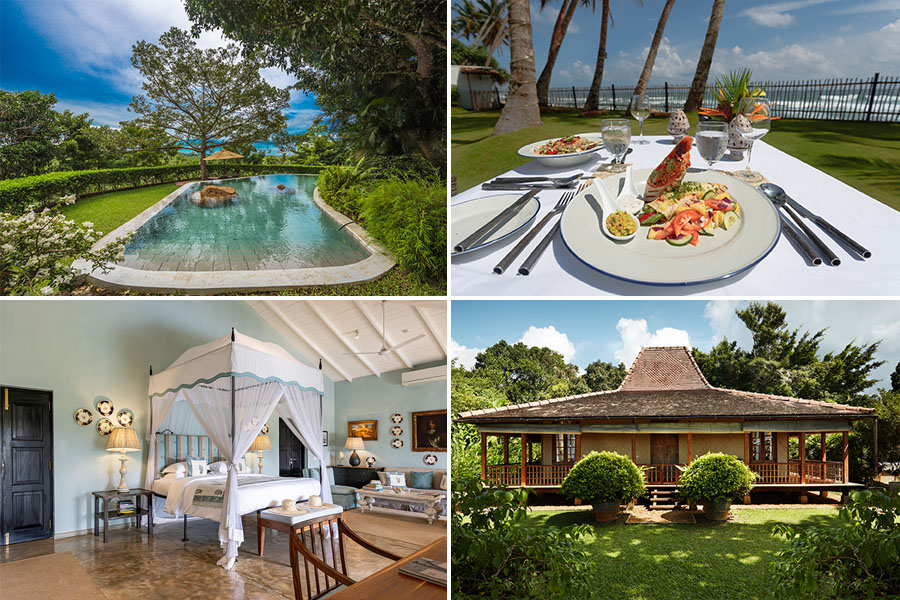From budget beauty to a luxe Lanka by Anoothi Vishal – Forbes India
July 10, 2024
July 10, 2024

How Sri Lanka is transitioning to a luxury getaway, and how affluent Indians seeking rich cultural and culinary experiences are key to the pivot

The newly opened ITC Ratnadipa in Colombo has stunning views of the Indian Ocean from its sky mansions, suites and bar, housed inside a glass bridge connecting the two towers.
The majestic blue of the Indian Ocean is the same hue as those flawless Ceylone sapphires. The sun’s not set yet. But as we sit contemplating the sea and the sky at Ahasa, an opulent bar inside an all-glass skybridge suspended 100 metres above the ground (it supposedly sways in the wind too, though we can’t feel the movement), sundowners are already doing the rounds.
There’s barrel-aged arrack on the rocks, smooth and sophisticated. Or, you may settle for tropical cocktails, flavours lightened with latest techniques bartenders are wont to show off these days—milk clarification, coconut wash or such. Or, then again, you could ask for a cuvee champagne to be popped open, as you sink into a lavish couch facing the blue. A three-piece jazz band strikes up notes from The Games of Thrones title track, drowning out murmurs from neighbouring tables of what one assumes are Colombo socialites. It’s just another day in paradise.
Ahasa at the newly-opened ITC Ratnadipa, Sri Lanka’s biggest hotel and one of India’s most substantial investments on the island, is the latest “with it” bar and lounge in Colombo.
The hotel opened in April-end, inaugurated by no less than President Ranil Wickremesinge, who hoped that it would be the beginning of more investments by Indian hospitality companies. Sri Lanka has been recovering from its sovereign debt default crisis of 2022, and investments such as this are good news for an economy on the rebound and for which tourism is the mainstay. Local investors, too, are upping the ante by opening or reviving a smattering of exclusive hospitality ventures.
This June, as I travelled from Colombo to Galle, from Kandy to Bentota, there was a clear sense of this new resurgence. The backpacking crowd is thinner and, although local curry and rice meals and dhal vadas with Lion beer will never go out of fashion (hopefully), the emphasis is shifting to higher-paying, well-heeled guests not afraid to spend on unique stays and experiences.
“Sri Lanka has always had a fabulous cache of luxe and ultra-luxe properties, including the Jetwing ones (the Saman Villas on the southern coast are among the most romantic hotels in the world) and the heritage Cinnamon resorts and hotels,” points out Karan Gokani, co-founder and creative director of the famous UK-based restaurant chain Hoppers.
Gokani, author of the recent Hoppers: the cookbook (a tribute to Sri Lankan homes and streets) has been “obsessed” with the island since 2009, when he made Sri Lankan friends at Cambridge and has been coming here extensively since then. “Since the Easter bombings of 2019, then Covid and the economic crisis, the affluent tourists were alienated,” he says. “Sri Lanka was seen as a bit of risk and it was the budget crowd, more opportunistic, that started coming. But that notion has been dispelled now.”

The Sri Lankan Tourism Promotion Bureau, post 2022, has been clear in its strategy of attracting “quality over quantity”. All through last year, plush features in international media have focussed not just on the pristine beaches but heritage tea trails and safaris, whale watching in the south, eco chic spas, gastronomy and even the Galle Lit Fest that had its best showing ever this January.
New hotels and boutique resorts are coming up or being resurrected with these experience seekers and high spenders in mind, who may also find incredible value too with the exchange rates vis-à-vis Lankan rupee and the pound or dollar or even the INR.
As the largest source market for inbound tourism, India is critical in this pivot, particularly as the Indian HNI becomes more important than ever globally as a high spender on luxe. This year, Sri Lanka is looking at 600,000 Indian tourist arrivals, aiming for its best-ever figures from its closest neighbour, buoyed by the growth in numbers over the last one year: This January, 34,399 Indians visited Sri Lanka, an increase of 2.5 times from January 2023. Interestingly, Maldives recorded a drop in the same period—from around 17,000 Indian tourists in January 2023 to 15000 in January 2024.
Read more click here.